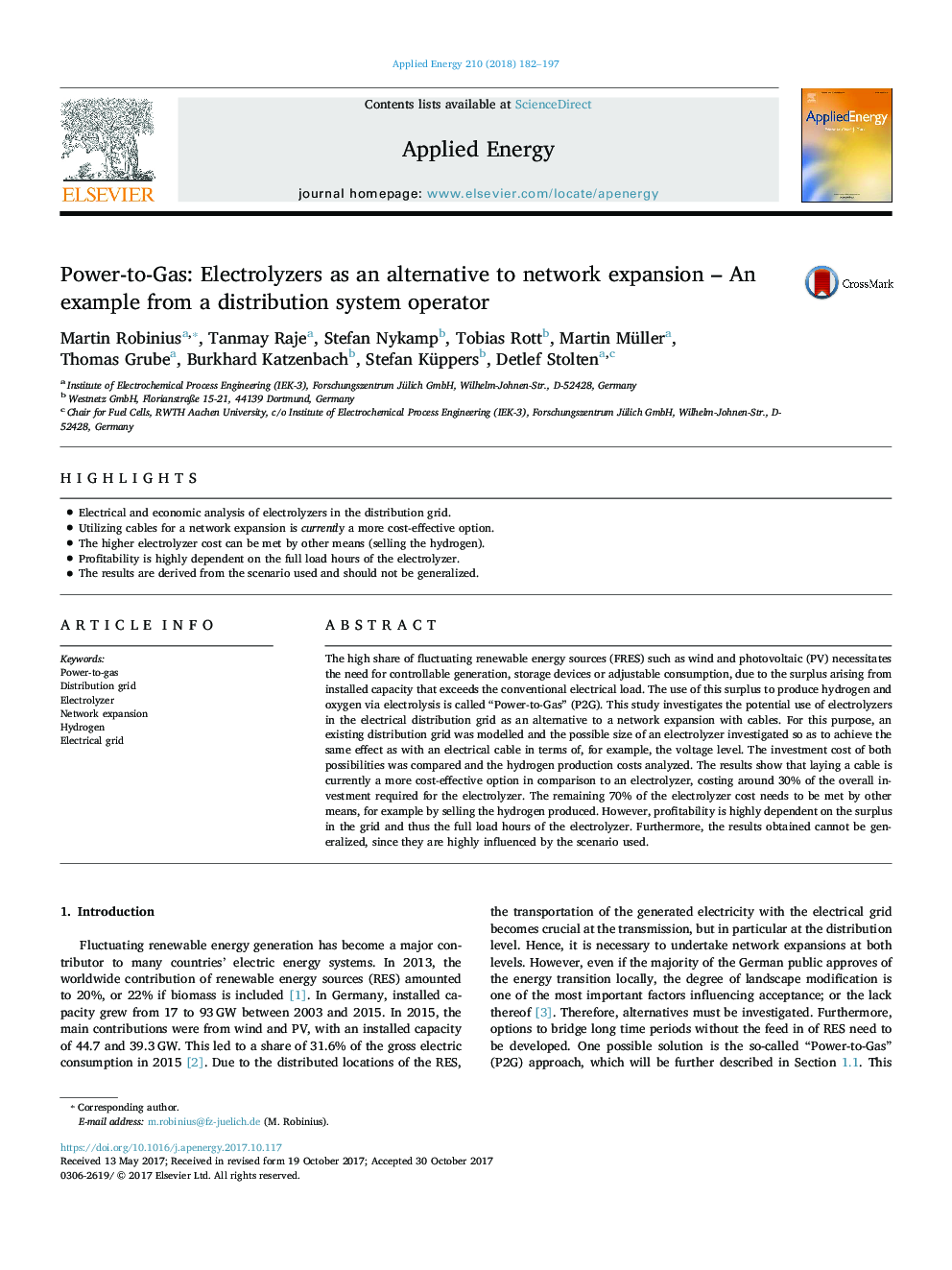| Article ID | Journal | Published Year | Pages | File Type |
|---|---|---|---|---|
| 6681173 | Applied Energy | 2018 | 16 Pages |
Abstract
The high share of fluctuating renewable energy sources (FRES) such as wind and photovoltaic (PV) necessitates the need for controllable generation, storage devices or adjustable consumption, due to the surplus arising from installed capacity that exceeds the conventional electrical load. The use of this surplus to produce hydrogen and oxygen via electrolysis is called “Power-to-Gas” (P2G). This study investigates the potential use of electrolyzers in the electrical distribution grid as an alternative to a network expansion with cables. For this purpose, an existing distribution grid was modelled and the possible size of an electrolyzer investigated so as to achieve the same effect as with an electrical cable in terms of, for example, the voltage level. The investment cost of both possibilities was compared and the hydrogen production costs analyzed. The results show that laying a cable is currently a more cost-effective option in comparison to an electrolyzer, costing around 30% of the overall investment required for the electrolyzer. The remaining 70% of the electrolyzer cost needs to be met by other means, for example by selling the hydrogen produced. However, profitability is highly dependent on the surplus in the grid and thus the full load hours of the electrolyzer. Furthermore, the results obtained cannot be generalized, since they are highly influenced by the scenario used.
Related Topics
Physical Sciences and Engineering
Energy
Energy Engineering and Power Technology
Authors
Martin Robinius, Tanmay Raje, Stefan Nykamp, Tobias Rott, Martin Müller, Thomas Grube, Burkhard Katzenbach, Stefan Küppers, Detlef Stolten,
